The Pink Princess Philodendron is a stunning houseplant that has taken the gardening world by storm. With its gorgeous pink variegation and unique growth habit, this rare gem is highly sought-after by plant enthusiasts. But what does it take to care for this exotic beauty? In this guide to Philodendron Pink Princess plant care, we'll explore everything you need to know, from understanding its origins and unique features to mastering its ideal growing conditions and preventing pests and diseases. Let's dive in!
Short Summary
- Philodendron Pink Princess has unique pink variegation and requires bright indirect light, comfortable temperatures, and humidity levels of 60-80%.
- Pruning should be done during spring or fall to promote balanced variegation. Repotting & propagation require special attention for successful growth.
- Pest control & disease prevention are essential. The plant is toxic to pets, so pet safety must be considered when handling it.
Understanding the Pink Princess Philodendron
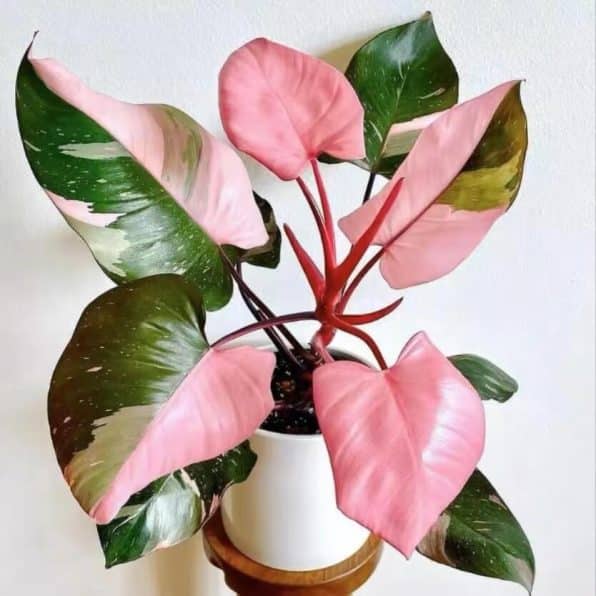
Originating from the tropical rainforests of Central and South America, the Philodendron Pink Princess belongs to the Araceae family. Its stunning pink and dark green leaves make it a showstopper in any indoor setting.
But what sets it apart from other philodendrons? The answer lies in its pink variegation, a beautiful and rare feature caused by a mutation in the plant. While it may share some similarities with its cousin, the Philodendron Pink Congo, they are not the same. In fact, the Pink Congo has been chemically modified and will eventually revert to green.
Variegation and Appearance
The pink variegation in Philodendron Pink Princess is a natural occurrence resulting from a chimeric mutation. This means that certain areas of the leaf lack chlorophyll, giving it that striking pink hue. However, the plant's beauty comes at a price – variegated plants tend to grow slower than their non-variegated counterparts due to their reduced chlorophyll content.
To maintain the vibrant pink coloration, it's essential to provide the plant with ample amounts of bright indirect light. Inadequate lighting will result in fewer variegated leaves, while an all-pink leaf is a sign of an unhealthy plant that will eventually decline.
The ideal leaf colors for a healthy Pink Princess Philodendron are dark green with a vibrant mixture of pinks.
Growth Habit and Size
The Philodendron Pink Princess exhibits a vining growth habit, reaching several feet in height. To support its climbing nature, it's necessary to provide the plant with a trellis or post.
However, if you prefer a bushier appearance or have limited space, you can continually cut and propagate the plant to encourage new growth and maintain a compact shape.
Rarity and Price Factors
Though the Pink Princess is not considered uncommon anymore, its rarity and price are influenced by supply and demand dynamics, as well as the slower growth rate and unstable variegation of variegated plants. It's essential to be cautious when purchasing a Pink Princess Philodendron, as some sellers may use spurious cultivar names or charge exorbitant prices for “uncommon” cultivars.
It's also worth noting that propagating the plant through seeds is not feasible.
Ideal Growing Conditions
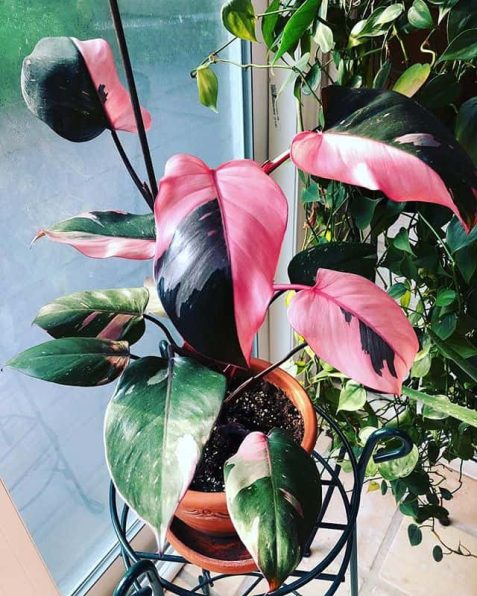
The key to a thriving Pink Princess Philodendron lies in providing the right growing conditions. This captivating plant prefers bright indirect light from an east or west-facing window, a comfortable temperature range of 60-85°F (16-27°C), and a humidity level between 60-80%.
By maintaining these ideal conditions, your Pink Princess will reward you with lush, vibrant foliage and stunning variegation.
Light Requirements
This particular plant, The Pink Princess Philodendron, requires bright indirect light to grow well. It will thrive in such an environment. Placing it in front of an east- or west-facing window is optimal. However, it's crucial to keep the plant away from direct sunlight, as overexposure can cause the blackish leaves to turn green and the pink variegation to turn white, while extended periods in direct sunlight can lead to scorched leaves.
If you notice yellowing leaves, consider moving your plant to a shadier location. Insufficient sun can also cause the plant to produce predominantly green leaves, losing its captivating variegation.
Temperature Preferences
The Pink Princess Philodendron prefers a temperature range of 60-85°F (16-27°C) for optimal growth. It's essential to protect the plant from direct heat or cold drafts, such as from air conditioning units, fireplaces, or open windows.
While the plant can tolerate temperatures as low as 55°F, excessively high temperatures should be avoided.
Humidity Needs
Ample humidity is crucial for the Pink Princess Philodendron, as typical household humidity levels may be too dry for this tropical beauty. A humidity range of 60-80% is recommended. Low humidity levels can cause an increase in transpiration rate, resulting in the plant's leaves turning brown at the edges.
To maintain adequate humidity, consider using a humidifier, placing the plant on a pebble tray, or situating it in a well-lit bathroom.
Soil and Watering Essentials
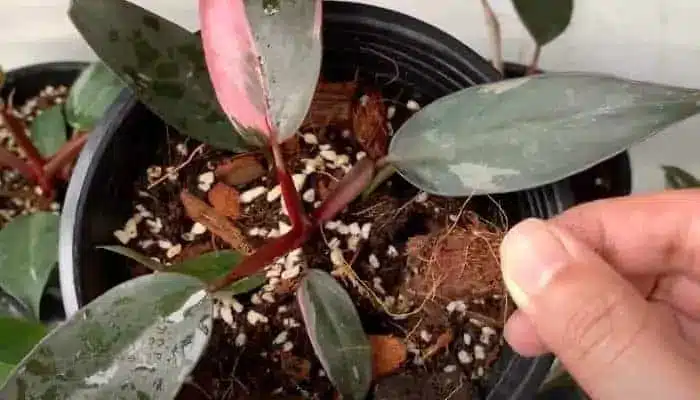
The right soil mix and watering practices are crucial for the health and growth of your Pink Princess Philodendron. A well-drained soil mix combined with proper watering frequency can help prevent common issues such as root rot and yellowing leaves.
In this section, we'll delve into the essentials of soil composition and watering techniques for your Pink Princess.
Choosing the Right Soil Mix
The ideal soil mix for Philodendron Pink Princess consists of 4 parts orchid bark, 3 parts houseplant potting soil, 2 parts coco coir, and 1 part perlite. This custom mix ensures a well-draining and well-aerated soil, providing the plant's roots with the right balance of water and oxygen for healthy growth.
Keep in mind that the Pink Princess Philodendron is susceptible to root rot if the soil remains too wet. This is why choosing the right soil mix is critical, as it helps prevent overwatering and promotes a healthy root system.
Watering Frequency and Techniques
Watering your Pink Princess Philodendron properly is essential for its health. It's recommended to water the plant when the top 1-2 inches of soil have dried out, taking care to avoid overwatering. During the summer months, ensure that the soil remains slightly damp, while in the winter, reduce watering to prevent the soil from becoming waterlogged.
Wilting leaves can be a sign of both under- and overwatering, so it's crucial to monitor your plant's condition and adjust your watering practices accordingly. If you notice only a few leaves turning yellow, you may need to move your plant to a shadier location or adjust your watering frequency.
Avoiding Overwatering and Root Rot
Overwatering your Pink Princess Philodendron can lead to root rot and other issues such as yellowing foliage and a wilted appearance. To prevent overwatering and root rot, ensure that the plant is not exposed to standing water and use a well-draining soil mix as mentioned earlier.
If you suspect that your plant is suffering from root rot, it's essential to treat the issue immediately by removing the affected roots, replacing the soil, and adjusting your watering practices.
Fertilization and Nutrient Needs
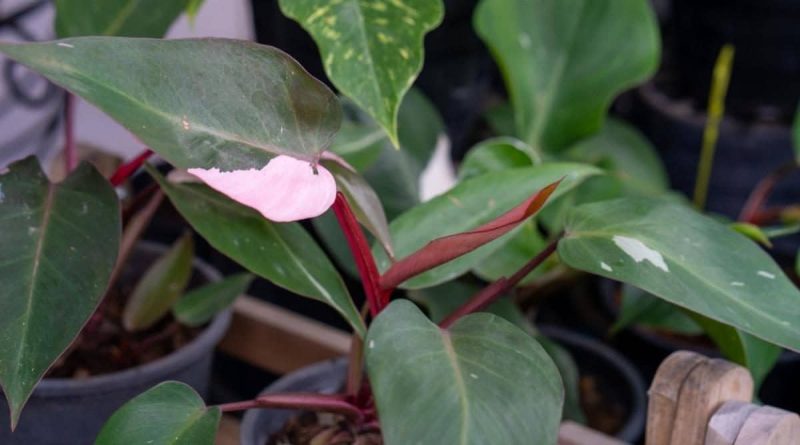
Just like any other houseplant, the Pink Princess Philodendron requires proper fertilization to thrive. Providing your plant with essential nutrients will result in healthy growth, vibrant foliage, and stunning variegation.
In this section, we'll discuss the types of fertilizers suitable for the Pink Princess Philodendron, the recommended fertilization schedule, and how to identify nutrient deficiencies.
Types of Fertilizers
There are several types of fertilizers suitable for the Pink Princess Philodendron. A balanced liquid fertilizer, a balanced NPK fertilizer (10-10-10) containing micronutrients, or an organic houseplant fertilizer diluted with water are all viable options.
Whichever type of fertilizer you choose, it's essential to follow the recommended application rates and schedules to ensure the proper nourishment of your plant without causing any nutrient imbalances or burn.
Fertilization Schedule
The recommended fertilization schedule for the Philodendron Pink Princess is monthly, using a diluted balanced liquid fertilizer between March and October. This schedule ensures that your plant receives the essential nutrients it needs during its growing season.
It's important to discontinue fertilization during the winter months when the plant's growth slows down due to the decrease in daylight hours.
Signs of Nutrient Deficiencies
Nutrient deficiencies can manifest in various ways in your Pink Princess Philodendron. Common symptoms include yellowing leaves, slow growth, and a lack of vibrant pink coloration.
These issues may be caused by deficiencies in iron, magnesium, calcium, and zinc. If you notice any of these signs, consider adjusting your fertilization practices and ensure that your plant is receiving the proper nutrients it needs for healthy, vibrant growth.
Pruning and Shaping

Pruning and shaping your Pink Princess Philodendron is not only essential for maintaining its appearance, but also for promoting healthy growth, balanced variegation, and the overall well-being of the plant.
In this section, we'll discuss the benefits of pruning, the best time to prune, and the proper techniques for pruning and shaping your Pink Princess Philodendron.
When to Prune
The optimal time for pruning your Pink Princess Philodendron is during spring or fall, just before or after the growing season. Pruning during these periods can help balance the ratio of non-variegated and variegated leaves, promote bushiness, stimulate new growth points, and maintain even variegation.
Pruning Techniques
Proper pruning techniques are essential for promoting healthy growth and maintaining the desired appearance of your Pink Princess Philodendron. When pruning, make a clean cut just above the node of the plant. These encouraging colors, pink and dark green or burgundy, act as a stimulant for new leaves to sprout from the node. This leads to overall better health of a plant.
Be sure to remove any damaged or yellow leaves and keep an eye on the overall health of the plant when pruning.
Encouraging Variegation Through Pruning
If you notice a lack of variation in your Pink Princess Philodendron, pruning can be used to encourage more variation. To achieve the desired speckled pattern, locate the most evenly variegated leaf and cut right above its node.
This will promote new growth with balanced variegation and ensure your plant maintains its stunning appearance.
Repotting and Propagation

Repotting and propagation are essential aspects of Pink Princess Philodendron care. Repotting refreshes the potting mix, encourages growth, provides more room for roots, and prevents rootbound. Meanwhile, propagation allows you to multiply your plant collection or share it with friends and family.
In this section, we will discuss the repotting process, suitable propagation methods, and tips for caring for new cuttings.
Repotting Process
The Pink Princess Philodendron should be repotted every 1-2 years, in a pot that is 1-2 inches larger than the previous one. Water the plant thoroughly at least a day before you plan to repot. This will ensure that the soil is sufficiently moist and will help with the transition. Carefully remove the plant from its container, gently scrape away any soil from the roots, and inspect the roots for any signs of rot or disease.
Fill the new pot halfway with the ideal soil mix mentioned earlier and place the plant inside, ensuring that the Pink Princess is at the same height as it was in the last container. Fill the remaining space with potting soil, carefully squeeze the stems together to support the plant, and water it properly.
Propagation Methods
Propagating your Pink Princess Philodendron can be done through stem cuttings or root division. To propagate through stem cuttings, take a cutting from the mother plant and place it in a pot with moist soil. The cutting should root in a few weeks.
For root division, carefully remove the plant from its pot and divide the root ball into two or more sections, and then replant each section in its own pot with moist soil.
Caring for New Cuttings
Once you've propagated your Pink Princess Philodendron, it's essential to provide proper care for the new cuttings to ensure successful growth. For stem cuttings, place the cutting in water and wait for new roots to emerge, which usually takes about two to three weeks. Once the roots have developed, transfer the cutting to soil and continue to care for it as you would a mature plant.
For root divisions, simply follow the same care guidelines as for the mother plant, ensuring they receive adequate light, water, and nutrients for healthy growth.
Pest Control and Disease Prevention

As with any houseplant, the Pink Princess Philodendron is susceptible to pests and diseases. Keeping your plant healthy and maintaining optimal growing conditions can help prevent these issues.
In this section, we'll discuss common pests and diseases that can affect the Pink Princess Philodendron, as well as prevention and treatment options to keep your plant vibrant and thriving.
Common Pests
Some common pests that can infest the Pink Princess Philodendron include mealybugs, aphids, spider mites, scale, and fungus gnats. To detect an infestation, watch for signs such as yellowing or wilting leaves, and webbing on the foliage.
To treat an infestation, use insecticidal soap or neem oil, and consider using a cotton swab dipped in rubbing alcohol to eliminate mealybugs.
Disease Prevention
To prevent diseases in your Pink Princess Philodendron, ensure it's kept in optimal growing conditions, including the appropriate temperature, humidity, and light levels. Regularly inspect your plant for any signs of infestation and take necessary action to treat pests and diseases if needed.
Also, avoid overwatering and maintain proper soil and humidity levels, as this can help prevent root rot and other diseases.
Treatment Options
If your Pink Princess Philodendron is affected by pests or diseases, it's essential to act quickly to treat the issue. Using insecticidal soap or neem oil can be effective for treating pests such as spider mites, aphids, and mealybugs.
In the case of diseases, it may be necessary to isolate the plant and treat it with appropriate fungicides. Always follow the product instructions and monitor your plant's progress to ensure a successful recovery.
Toxicity and Pet Safety
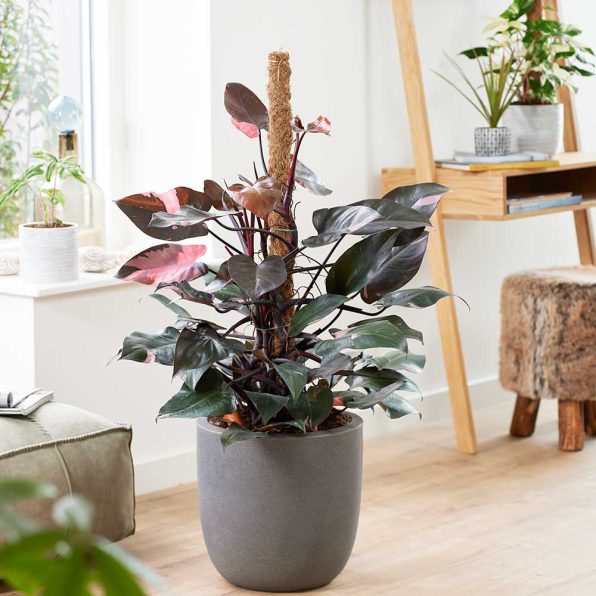
It's important to note that the Pink Princess Philodendron is toxic to pets, including cats and dogs, due to insoluble calcium oxalates present in all parts of the plant. Ingestion of any part of the plant can cause oral irritation, pain, swelling of the mouth, tongue, and lips, excessive drooling, vomiting, difficulty swallowing, and other severe respiratory and digestive issues that could be potentially fatal.
To protect your furry friends, keep your Pink Princess Philodendron out of reach and seek veterinary help immediately if you suspect your pet has ingested any part of the plant.
Summary
Caring for your Pink Princess Philodendron may seem like a daunting task, but with the right knowledge and attention to detail, you can enjoy a thriving and beautiful plant in your home. By understanding its unique features, providing the ideal growing conditions, and maintaining proper soil, watering, and fertilization practices, you can keep your Pink Princess healthy and vibrant. Additionally, regular pruning, repotting, and propagation will ensure successful growth. Remember to monitor your plant for pests and diseases and keep it out of reach of pets for their safety. With proper care and dedication, your Pink Princess Philodendron will be an enchanting addition to your indoor garden.
Frequently Asked Questions
How do you take care of a pink Princess philodendron?
To properly care for your pink Princess philodendron, provide it with bright, indirect light and mild temperatures between 55-80 degrees Fahrenheit. Keep the soil consistently moist but not soggy and avoid direct sunlight to keep its unique variegation.
With some TLC, your pink princess will thrive!
Is philodendron pink Princess easy to care for?
For a vibrant, colorful plant, the Philodendron Pink Princess is surprisingly easy to care for. As long as it has bright indirect light and regular watering, this unique plant will flourish and create a beautiful addition to your home. It's a great choice for those who are new to houseplants, or for those who want to add a unique touch to their home. The pink and green variegated leaves make a beautiful flower.
How often do you water a pink Princess philodendron?
For best results, water your pink Princess philodendron weekly by allowing the top inch of soil to dry out between thorough waterings.
Avoid standing water and ensure proper drainage for your plant.
How much light does a pink Princess philodendron need?
A Pink Princess philodendron needs medium to bright indirect light for optimum growth and health. Without adequate light, the leaves will be smaller and the vines will become leggy.

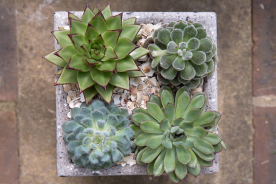



No Comments